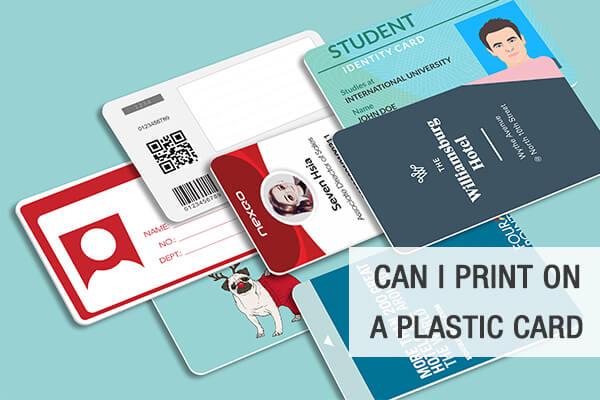Plastic cards are everywhere you look as they’re used for loyalty programs with businesses, credit card payments, and business cards. Plastic card printing allows one to produce highly customized plastic cards for a wide range of needs. The printing process and technology used to print plastic follow a unique process that is quite different from printing on paper. Information printed on plastic must be very durable, clear, and able to stand the test of time. Printing on plastic cards requires a specific printer designed for plastic as they can’t be run through a regular laser or inkjet printer like paper cards.
Selecting a plastic card printer
There are a lot of features to consider when selecting a plastic card printer. Some printers can print single-sided while others can print double-sided cards. Are you printing a single card or many at a time? Do you require a magnetic stripe encoder? Is speed important?
Printing processes
Direct-to-card printing or dye diffusion thermal transfer and retransfer printing are the two printing processes available for plastic cards. The key difference between the two processes is in the process of transferring the image on the card.
Direct-to-card printing
This printing process makes use of both the dye sublimation process and monochrome thermal transfer.
a) Monochrome Thermal Transfer
This printing technique uses a monochrome ribbon. A single layer of color is applied to the PVC card at one time. The print head heats a specific area of one color panel which is applied to the plastic card. To make the print more durable, a varnish is applied on top of the card. This is the most cost-effective printing technique when only a single color print is required.
b) Dye sublimation
Dye sublimation produces the highest quality photographic results. This printing technique ensures minimal spillage and mess as the sublimation process turns color into vapor without becoming a liquid first. The ribbon has several color panels and it’s the key piece of equipment stored in the printer. Any combination of these panels can be heated as required by the portable printed head. The physical layer of color is then vaporized and transferred to the first layer of the PVC’s card surface. The color dye bonds chemically with the plastic surface and the colors quickly solidify. To achieve the desired color, further layers are transferred and superimposed. This technique has one of the fastest printing speeds.
Retransfer printing
This printing process uses two stages. Firstly, a transparent film is used that has the design image printed onto it in reverse. This is done with the sublimation technique where different layers of color are applied until the design color is achieved. The transparent film is then applied to the card and the original design is displayed. This printing technique can be applied to a larger range of mediums than some direct-to-card printing techniques.
Conclusion
A plastic card printer allows one to customize their plastic cards for multiple uses. Both printing techniques are beneficial depending on your printing needs.
Nexqo is a professional card maker with more than 10 years of experience in the card-making industry. Recently, we’ve developed an eco-friendly material that can perfectly replace PVC cards. Click here to learn more about this very latest eco-friendly material.
You can also click here to learn more about the products that you can use in your project. If you are not sure, welcome to contact our sales experts any time.
.png)
